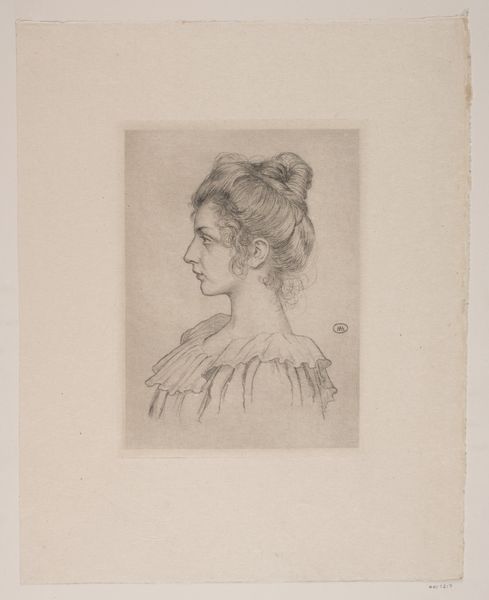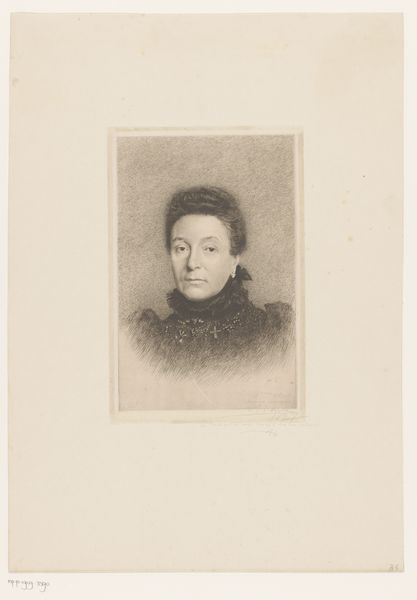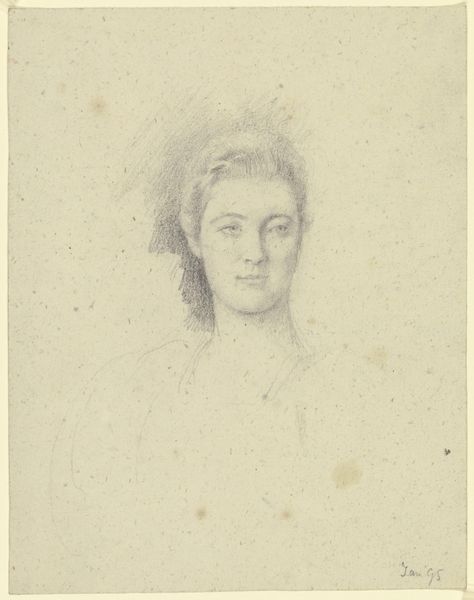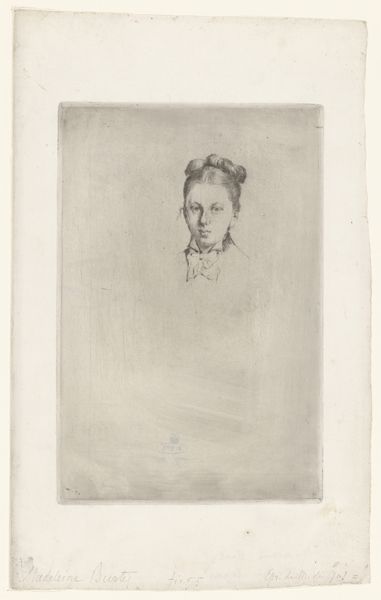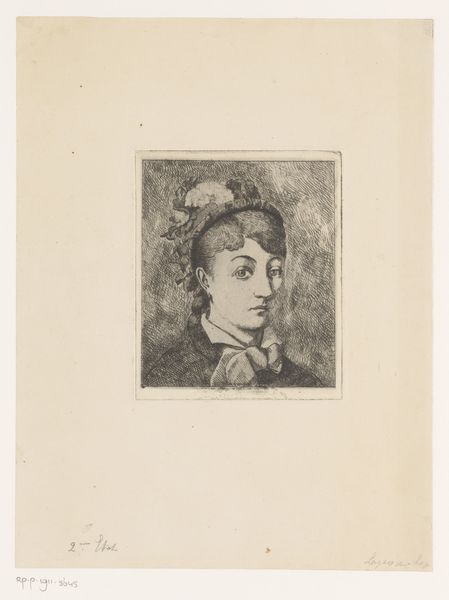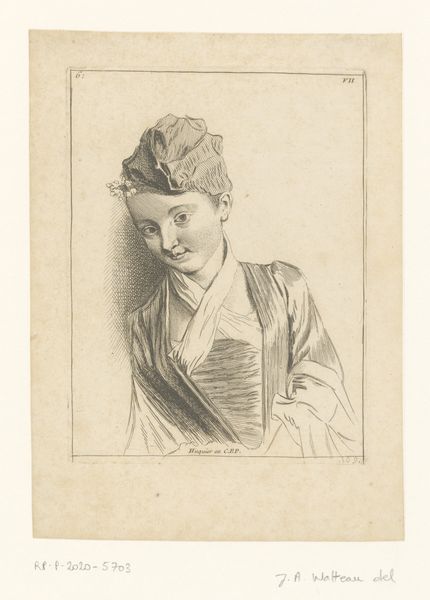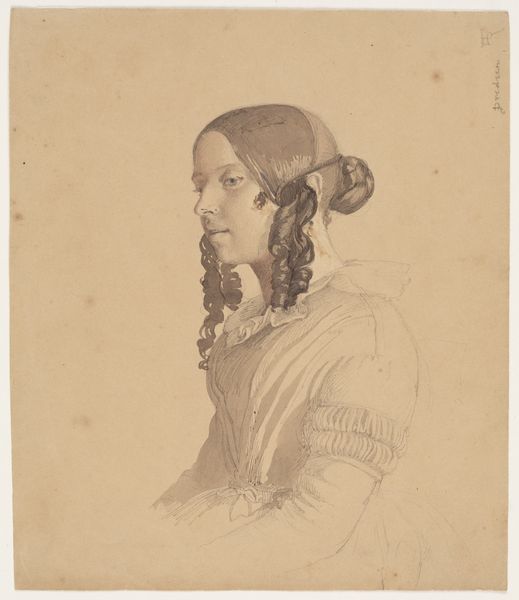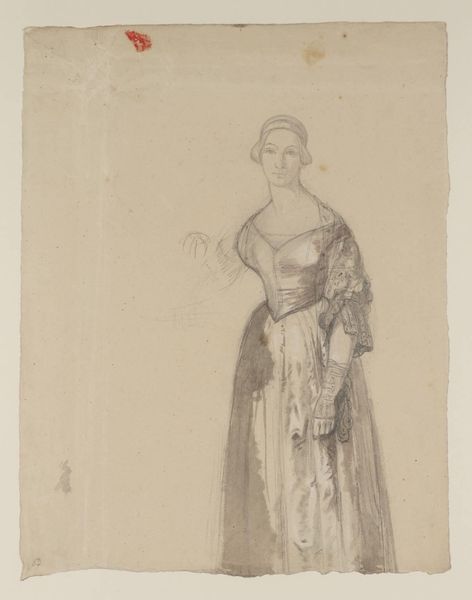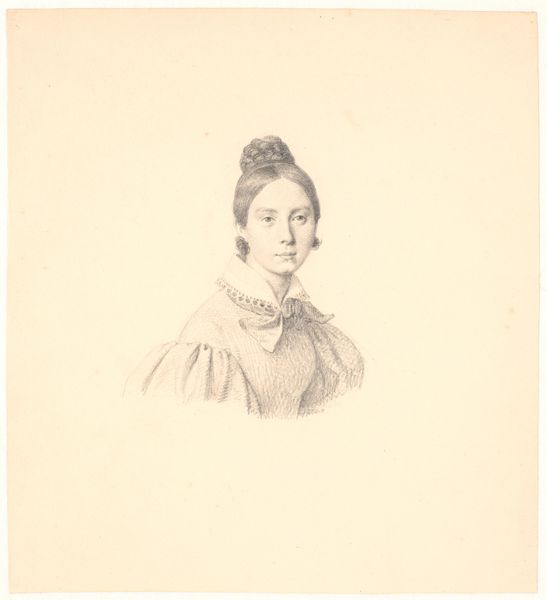
Dimensions: height 240 mm, width 159 mm
Copyright: Rijks Museum: Open Domain
Curator: This drawing, rendered in pencil, is titled *Portret van de vrouw van Victor-Charles Mahillon*, or Portrait of the Wife of Victor-Charles Mahillon. Auguste Danse created it in 1897. It currently resides here at the Rijksmuseum. Editor: There's a palpable sense of quiet dignity here, wouldn't you say? The sitter’s expression, combined with the soft lines of the pencil, evokes a feeling of calm introspection. Curator: Indeed. Looking at her attire, and knowing the social context of the time, it evokes the restrained elegance expected of women of a certain standing during the late 19th century. The lack of adornment directs attention squarely toward her character as captured by Danse. Editor: I'm struck by the sparseness, particularly lower down. Note how Danse doesn’t complete her torso, choosing to let the pencil lines fade. This not only accentuates her face, but might say something about women and representation in this period; always shown from the shoulders up. Curator: That incompleteness allows us to, perhaps, impose our own readings onto the subject. The pencil lends a certain intimacy. This isn't a grand oil painting intended for public display; rather it's a personal glimpse, perhaps a preparatory sketch, granting a raw, unvarnished view of Madame Mahillon. Editor: Considering the history of portraiture, there's also a vulnerability here. She seems unguarded. In more formal, commissioned portraits, sitters would often adopt idealized poses. Here, she appears as herself, conveying both her position, but also maybe her anxieties and fears as well. Curator: Precisely. There is, of course, the additional historical dimension added by Victor-Charles Mahillon’s prominence, he being a famous Belgian musician and curator of the musical instrument collection at the Brussels Conservatory. Editor: So this image could also say something about women married to public figures, whose individual identity could so often be eclipsed. Here, we see a character, but we still come away not knowing who she truly was beyond her famous husband. Curator: The Rijksmuseum is privileged to be able to share such images with its public. We invite visitors to meditate upon images such as these and try to engage in dialogs about their impact and historical influence. Editor: This unassuming drawing manages to speak volumes about personhood, status, and the art of representation across a broad historical spectrum. Thank you for spending your time with this drawing.
Comments
No comments
Be the first to comment and join the conversation on the ultimate creative platform.
